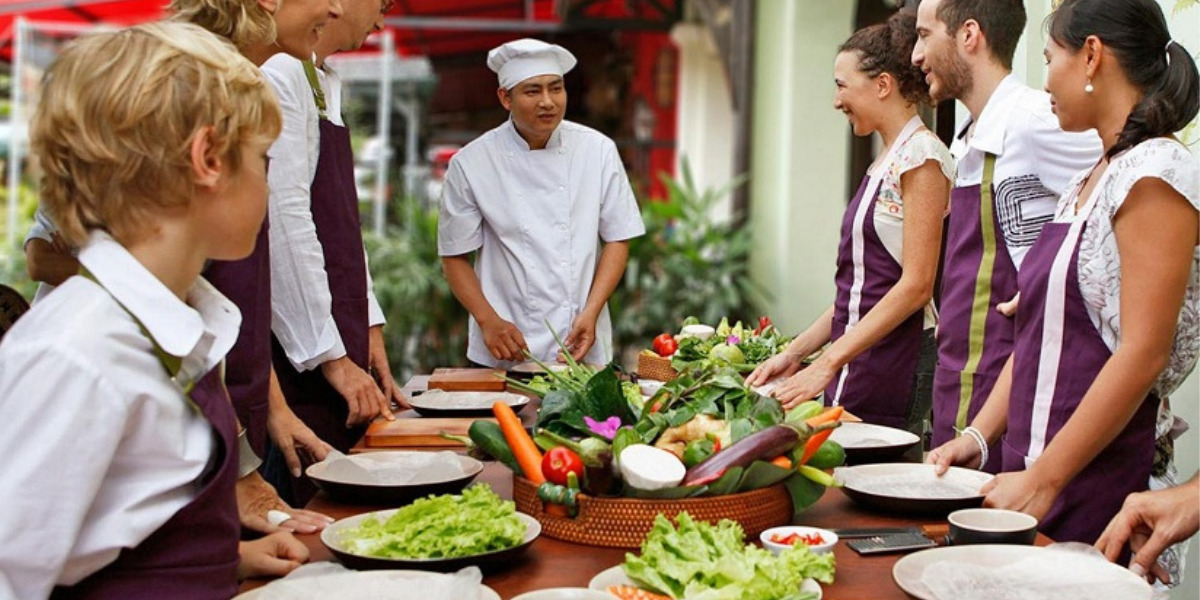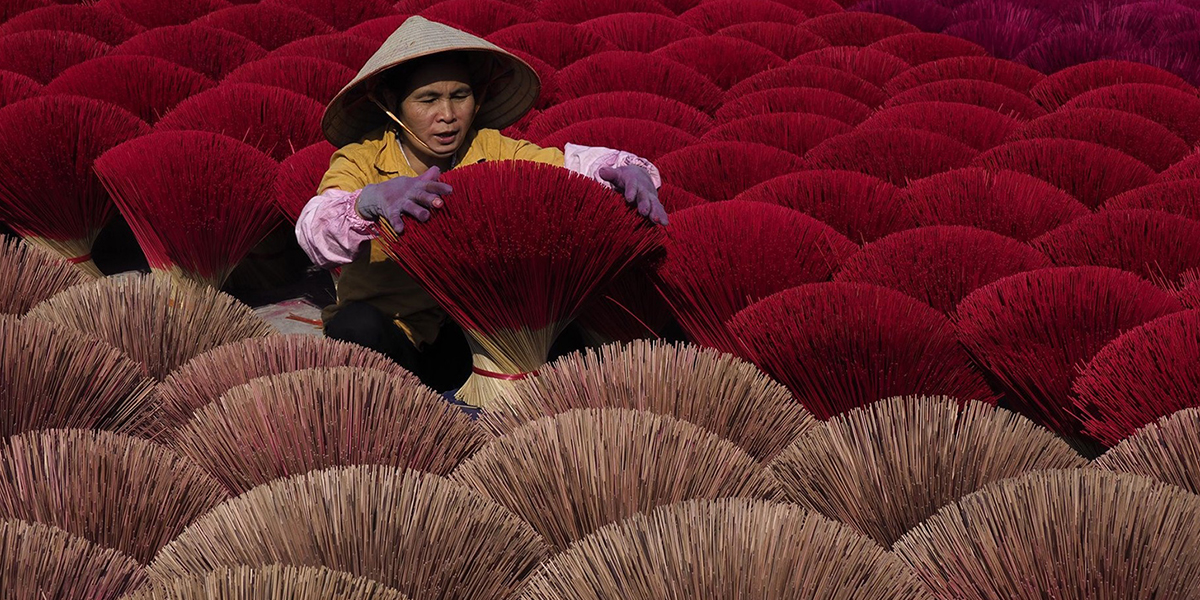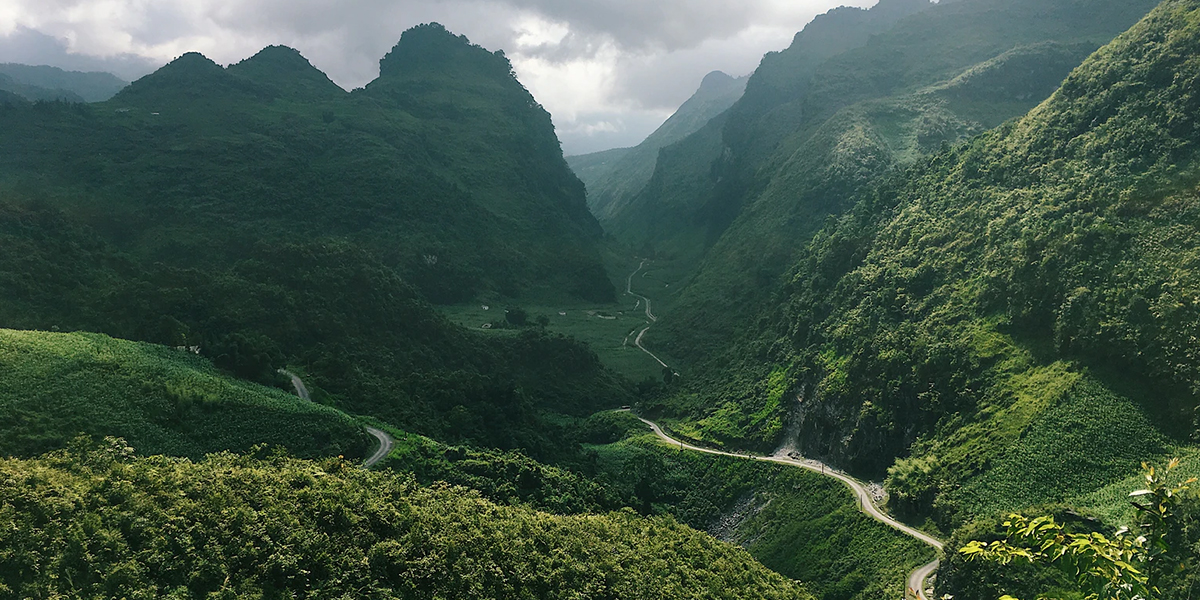Dragons are mythical creatures in the culture of Vietnam in general, and many countries in the world in particular. Their auras and forms vary not only between regions but also between different historical periods and dynasties. Vietnamese dragons have artistic meanings, are evidence expressing the life, thoughts, and beliefs of the ancient Vietnamese people, and have made a great contribution to clarifying outstanding issues in the study of the history of Vietnam.
I - Legend of Vietnamese dragons
The Vietnamese dragon has been in the hearts of locals since around the 8th century BC - the founding of the country, associated with many legends. According to research, the dragon is the divine image of crocodiles, which was the animal the ancient Vietnamese worshiped, combined with the features of other species. Unlike the rule in China that dragons reserved only for the ruling class, the dragon in Vietnam is more popular and can be used in decoration, architecture, and art of all classes.

Source: thegioicotich
Compared to the ferocious Eastern dragons, or the dreadful Western dragons, Vietnamese dragons also tend to look more friendly. Its body is winding like a snake in a sinusoidal shape with 12 segments corresponding to the months of the year, with small scales on the back like the scales of a carp. The dragon’s head has no horns, but has a long lion mane, chin whiskers and large protruding eyes, wide open jaws with fangs, long and thin tongue. The dragon also has the soles of the tiger’s feet, the scallop-like belly and the claws of the falcon, symbolizing eternal strength and power.
Vietnamese people also identify themselves as children of Vietnamese dragons and grandchildren of Fairies, derived from the legend about the origin of this nation. According to that story, Lac Long Quan - son of the Dragon family - married the fairy Au Co, who later gave birth to one hundred children. They are believed to be the ancestors of today’s Vietnamese people, creating the Vietnamese Dragon and Fairy lineage. But there is also another legend that says “grandchildren of Fairies” directed at Vu Tien, mother of Than Long Nu who gave birth to Long Quan, because fairies is also “Tien” in Vietnamese.
II - Vietnamese dragons in the local culture
1 - Dragon is one of the 12 zodiac animals
Behind the Cat and before the Snake, the Vietnamese dragon ranks 5th in the 12 zodiac animals system, representing the Yang and royal authority. They exist everywhere, from the water, the ground to the air, acting as a symbol of water and favorable signs for agriculture. In Vietnamese culture, people born in this year are often considered natural leaders - energetic, generous and fair, thereby successfully achieving power, wealth and prosperity. However, they are also said to have some drawbacks in personality such as being quite hot-tempered, overconfident and lacking in meticulousness.

Images of Vietnamese dragons - Source: baoquangngai
According to the Oriental Horoscope, people born in the year of the Dragon should be in business with those born in the year of the Rat, Monkey or Rooster, who are calmer or wiser. Regarding love, their frankness will match the sophistication of the Rooster, the similarity in thinking with the Rat, or the stability of the Monkey. Meanwhile, people born in the year of the Dragon are not compatible with the Dog, the Ox, and the Goat - them being together often creates many disagreements in all aspects, which easily lead to quarrels, difficulties and separation.
A bit more about Vietnamese dragons in spiritual meaning of Oriental Horoscope:
|
Date of birth (Solar calendar) |
Lucky numbers |
Lucky colors |
|
January 27, 1952 - February 13, 1953 |
6, 7 |
White, silver |
|
February 13, 1964 - February 1, 1965 |
3, 4 |
Green, emerald green |
|
January 31, 1976 - February 17, 1977 |
9 |
Red, orange, purple, pink |
|
February 17, 1988 - February 5, 1989 |
0, 1 |
Sea blue, blue |
|
February 5, 2000 - January 23, 2001 |
2, 5, 8 |
Brown, dark yellow |
|
January 23, 2012 - February 10, 2013 |
6, 7 |
White, silver |
|
February 10, 2024 - January 28, 2025 |
3, 4 |
Green, emerald green |
2 - Vietnamese dragons in art

Source: baodantoc
During major holidays in Vietnam such as the Lunar New Year, the Mid-Autumn Festival or the shop opening ceremony, you will often encounter spiritual animal dance troupes performing. One of them is the dragon dance - a famous Vietnamese dragon art, which is a custom that comes from a folk story about a dragon being bitten by a centipede. It went to find a folk healer and got treated wholeheartedly, so the dragon returned the favor to the person by dancing to pray for favorable weather. Therefore, although this activity has many different meanings in different regions, they are simply expressing the wish for peace, luck, happiness and prosperity.
Vietnamese dragons dance is often accompanied by lion dance and lan dance, in addition to many other folk art forms such as dragon procession, Vietnam dragon boat festival,… In particular, the image of this mythical creature often appears in water puppetry, notably the play “Dream Dragon” which was completed and staged recently in 2019. Scriptwriter Le Quy Duong adopted the image of dragons to express the dream of exploring, connecting and supporting between people, between countries
3 - Dragon in Vietnamese literature
The image of Vietnamese dragons often symbolizes the ancestors’ support in protecting the country, and the creativity in fighting invaders in historical anecdotes. For example, stories have told that the Dragon King gave An Duong Vuong a magic crossbow to keep Co Loa citadel (about 3rd - 2nd century BC), gave Le Loi a precious sword to fight the Ming invaders (15th century), etc. In addition, it also symbolizes the good aura, luck and prosperity of the lands, such as Ha Long (“dragon descended”), or Thang Long, named after a flying dragon seen by King Ly Thai To.
In addition, the Vietnamese dragons in folklore symbolizes luxury and nobility, associated with the sublimation image, likened to the carp or the snake turning into a dragon. It is the change of destiny such as children succeeding, lovers finally getting married, talented people who are restrained finally able to express themselves,... Dragons also denote appearance or personality, such as saying that a person who eats like a dragon means they eat good and fast, and so on.
4 - Dragons in architecture

Source: baotangdanang
Vietnamese dragon symbolize kingship and prosperity, so they often appear in palaces, ancient citadels, royal tombs, etc. In the sanctuary worshiping spaces, there are also carvings of Vietnamese dragons, especially if the place is related to historical kings. A dragon has a long mane, chin beard, large eyes and mouth, no horns, biting the pearl expressing admiration for the noble human spirit. They also often appear in pairs, soft winding, now competing for the pearl instead of having one in their mouth, or adoring the sun / the moon.
According to the concept of feng shui, the King must maintain a good harmony between yang and yin, shown with the decorations of dragons (yang) and moon (yin) that often appear at palaces, temples, pagodas, shrines,… Meanwhile, the Vietnamese dragons together with the sun will increase the yang element many times over, becoming a sacred fire that banishes all evil and darkness, protecting the sacredness and peace. Two dragons represent two interacting forces, so they never hold a pearl because it is a symbol of the balanced universe.
5 - Vietnamese dragon tattoo images
The images of dragons are so popular in Vietnam tattoo culture. People have tattoos with the meaning of power, prosperity, universe, existence, wisdom, luck and life.

Source: eratattoo
III - The image of dragons in Vietnam through feudal periods
The image of the dragons through each historical period has different shapes, sizes and features, showing different layers of meaning. Those changes in details are consistent with the economic - political situation of that period, giving insights into a piece of history.
1 - Vietnamese dragons in the Ly Dynasty

Source: tiki
The Ly Dynasty lasted from 1010 to 1225, with the dragon image existing from the beginning associated with the name Thang Long Capital - the flying dragon. Representing the nobility and authority, Ly dragons were quite simple in style and consistent in structure, making the works of this period easily recognizable. However, there are not many remaining artistic relics of dragons from the Ly dynasty, mostly in pagodas such as Phat Tich (Bac Ninh Province), Bao An (Hanoi) and Linh Ung (Da Nang City), or on newly discovered pottery of the Thang Long Imperial Citadel.
The traditional Vietnamese dragons from these places have a smooth, curving body with faded scales, 4 slender legs each having 3 claws, representing the lands belonging to the country at that time. Their head is hornless and noseless, raised high with large and slightly convex round eyes, curved up sharp fangs, long mane and antennae, slightly meandering crest. The last feature is said to be borrowed from Naga’s image, looking slim making them disproportionate to the head proportions, especially to the long upper jaw surrounded by fiery sabers.
This period was when Vietnam regained independence after more than 1000 years of Northern domination, so the dragon image is very traditional. Vietnamese dragons of the Ly dynasty also symbolized the wet-rice agricultural culture, representing things such as good weather, bountiful crops and prosperity. At this time, their images were not influenced by Chinese culture, so talking about the traditional Vietnamese dragon symbol is referring to the dragons of the Ly Dynasty.
2 - Dragon of the Tran Dynasty

Vietnamese dragon drawing - Source: softvn
The Tran Dynasty lasted for 174 years, from 1226 to 1400, bringing about many changes in the image of dragons compared to the Ly dynasty. They also have many versions with different movements, so the details are diverse, from the tail, head to claws. In general, the body of Vietnamese dragons in this period was bigger with arc-shaped scales, winding more freely, comfortably and decisively. Its mouth widens baring the teeth, while the mane and hairs flutter depending on the remaining vacant position, and some new details such as horns or ears have appeared.
In carving, the images of traditional Vietnameses dragon often appear in citadels, tombs and pagodas, typically the two statues on the doorstep of King Tran Anh Tong’s tomb in An Sinh mausoleum (Quang Ninh Province). The images also appear on the pedestal of Thanh Sam Pagoda (Hanoi), Do Quan Pagoda (Nam Dinh Province) or Thay Pagoda (Hanoi).
In addition, terracotta dragon heads have been found in Pho Minh tower (Nam Dinh) and Imperial Citadel of Thang Long, while dragon images decorated on glazed ceramic tiles have been found in Hoa Yen Pagoda (Quang Ninh).
3 - Vietnamese dragons in the Ho Dynasty
This was a rather short dynasty of Vietnam, lasting 7 years from 1400 to 1407, so only a few artifacts about dragons of this period still exist. There is a pair of Dragon statues in the Ho citadel (Vinh Loc district, Thanh Hoa province) with a length of 3.6m, but the head has been lost. Fortunately, the rest of the statues are still able to show the general style - the Dragon’s body is long and stout, has arcing scales and six evenly curved strokes that taper towards the end of the tail. These dragons represent vitality and boldness, corresponding to this period of numerous reforms.
4 - Vietnamese dragons in the Early-Le Dynasty

Source: dantri
Developed on the basis of harmonizing the styles of the Ly and Tran dynasties, the dragon of the early-Le dynasty (1428 - 1527) basically kept its sturdy and strong shape. However, they were no longer soft and round - a crest and horns that look more fierce and majestic were also added. The dragon's head in this period was quite big with a nose equally large in size, the mane was pushed backward, the crest of fire was completely removed, and the upper edge of the mouth was still long but straighter, surrounded by a row of serrated teeth like a leaf.
The most prominent examples of the Vietnamese dragons in this period are carvings on the stone steps at Kinh Thien Palace (1467) & Thang Long Imperial Citadel in Hanoi capital. The pair of dragons meandered down from the platform with a large head, two protruding horns, bulging eyes, short hair and a mane rolled back. Its legs have five sharp claws, one of them holds the long beard and the neck is smaller than the body, all surrounded by fire knives. The dragons in Vietnam in this period are influenced by Chinese culture, representing the strong penetration of Confucianism into Vietnam at the time.
5 - Vietnamese dragons in the Mac Dynasty

Source: mactrieu
The official existence of this dynasty is 66 years, but if the periods of taking power are included, then it lasted from 1527 - 1677. The dragon image of the Mac dynasty inherited the traditional style of Ly, Tran, and early-Le, with the common features being a fat body and even curves. They have a long mane extending down to half of their back, short legs with 4 claws, horns with two forks, two protruding eyes, a lion's nose, surrounded by clouds of fire and rolling waves. Their images were often carved in pagodas and communal houses, on bricks, terracotta pottery, roofs, stone steles, etc.
There are still relics of Vietnamese dragons decoration on bricks at Ong Pagoda (Ha Nam Province), Tram Gian Pagoda and Boi Khe Pagoda (Hanoi), as well as terracotta pottery mounted on the roof of Mui Pagoda (Thuong Tin District, Hanoi). Meanwhile, the unique anthropomorphic wooden carving of Confucian Dragons (Van Sa communal house - Ba Vi District) praises learning, with images of the father dragon holding a pen and the baby dragons holding up books. There are also many carvings in other communal houses like in Tho Ha Village and Lo Hanh Village (Bac Giang Province),… or statues at Nhan Trai Pagoda (Hai Phong City).
6 - Vietnamese dragons in the Nguyen Dynasty

Source: trithucvn
The Nguyen Dynasty was the last feudal dynasty of Vietnam, lasting from 1802 to 1945. The traditional Vietnamese dragon in this period still retained some traditional beauties, but were mainly influenced by China with a rather fierce look, also symbolizing the king and the power of kingship. Their scaled body has regular and delicate curves, showing a majesty with crocodile legs and five falcon-like claws sticking out. Their face looks like a demon with multi-branched horns, a wide mouth with sharp fangs, a lion-like type of nose, a mane full of hair freeflow and a twisted tail.
Because it is the closest dynasty to the present, many vestiges of Vietnamese dragons are still preserved, especially in the relics of pagodas and communal houses from Hue to the Red River Delta. Prominent ones are the carvings around vermilion wooden columns or bronze columns at famous historical sites in Hue city such as Ngo Mon, Minh Mang Tomb, Tu Duc Tomb, Thieu Tri Tomb and Dong Khanh Tomb. The dragons of the Nguyen Dynasty was a symbol of a southern empire with a majestic beauty, but rather stodgy and having a lot of features seem to be influenced by China, showing the decline of the dynasty.
The Vietnamese dragons are still one of the most important traditional cultural symbols of the country, with special meaning in the minds of local people. From the beginning to the present, they have changed quite a lot in shape and style throughout the feudal dynasties. But no matter what, the traditional Vietnamese dragon is still an irreplaceable existence, associated with the legend of the origin of this nation - the descents of the Dragon and Fairy.







.jpg) — Ha Bich
— Ha Bich





































